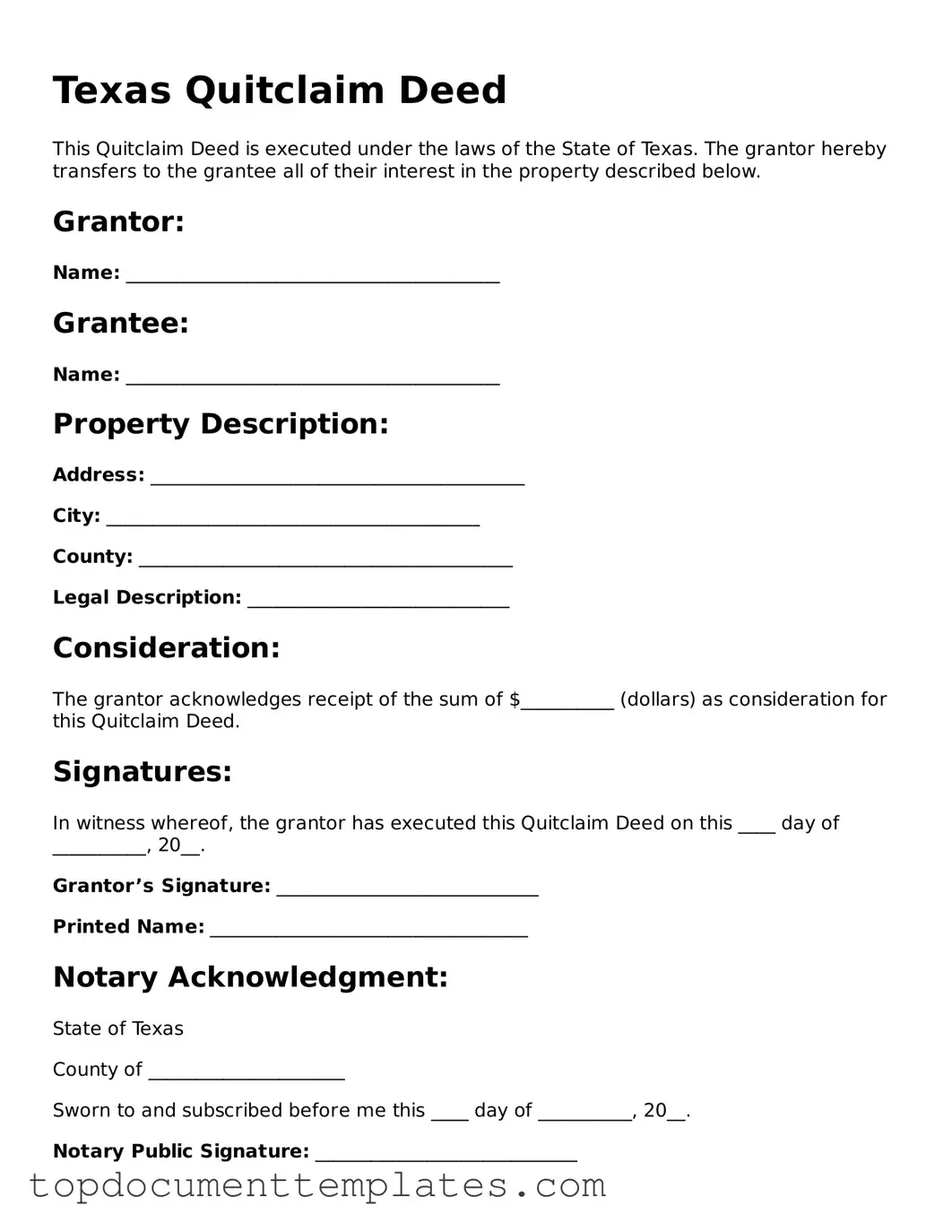Valid Quitclaim Deed Form for Texas State
A Texas Quitclaim Deed is a legal document used to transfer ownership of real estate from one party to another without guaranteeing the property's title. This form is particularly useful when the transfer occurs between family members or in situations where the seller does not wish to make any warranties about the property. If you're ready to complete your property transfer, fill out the form by clicking the button below.
Open This Form
